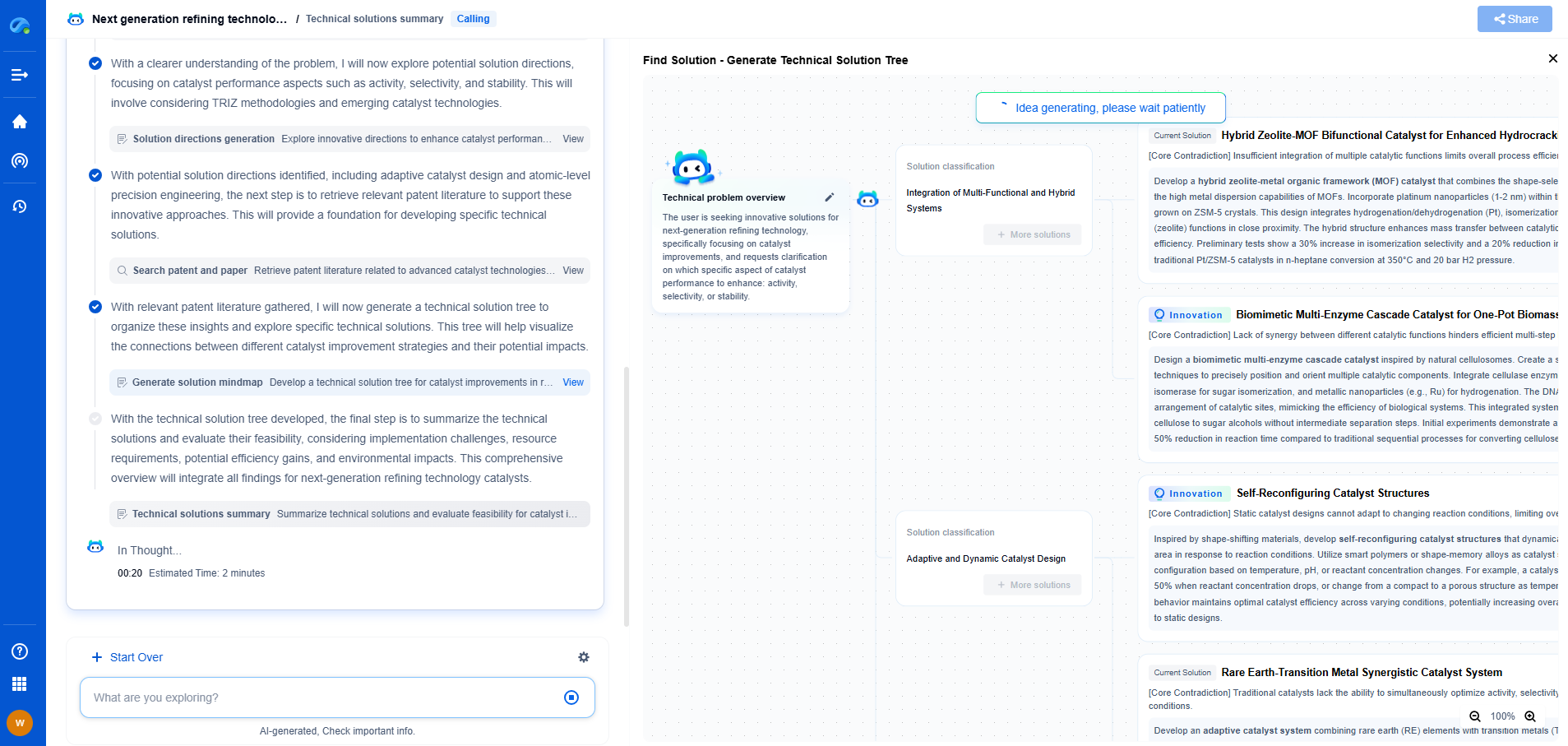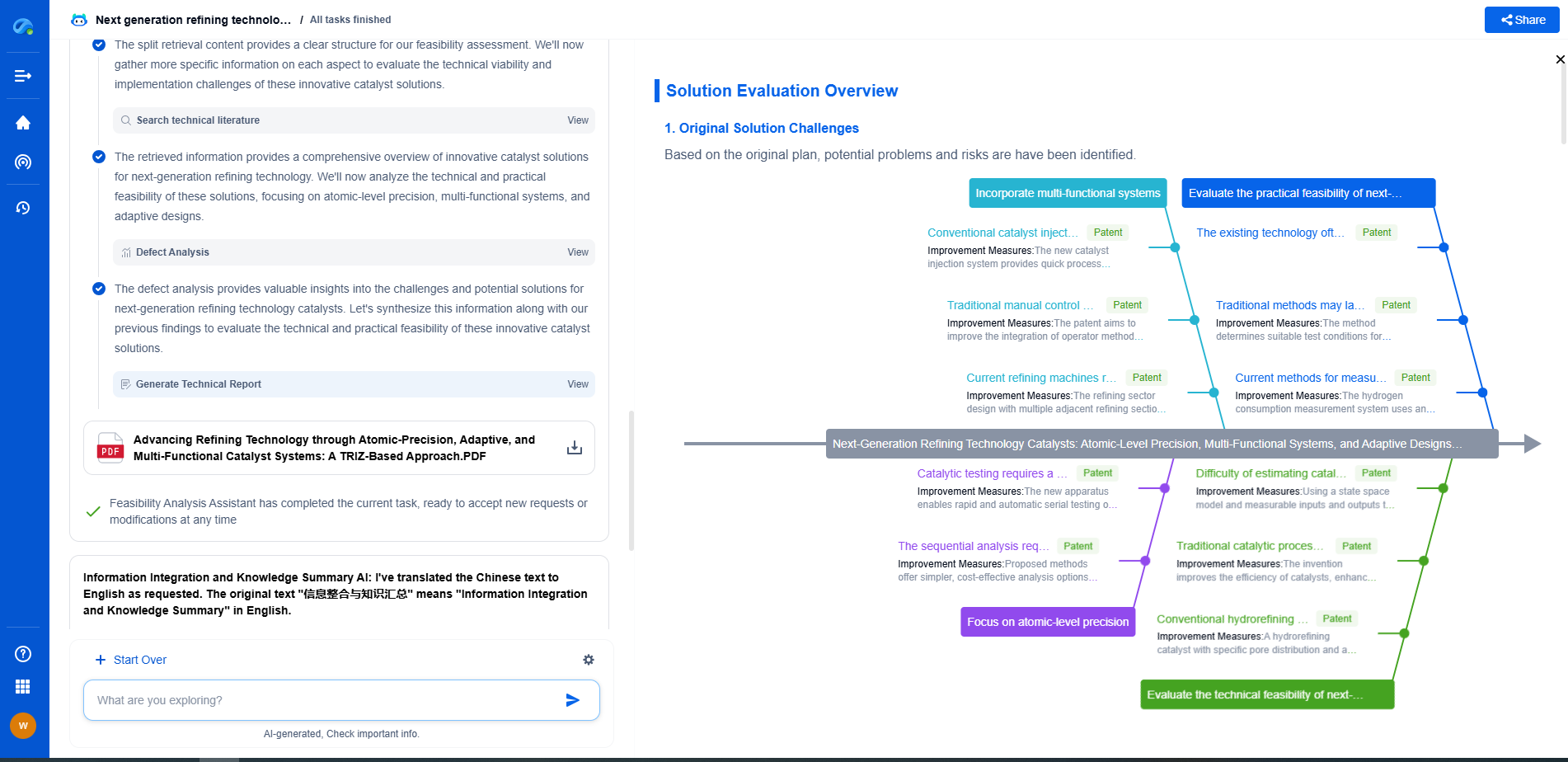Best Biodegradable Polymers for Eco-Friendly Packaging (PLA vs. PHA)
JUL 3, 2025 |
In recent years, the demand for sustainable and eco-friendly packaging has surged as consumers and businesses become more conscious of their environmental impact. Among the myriad of options, biodegradable polymers have emerged as a leading solution for reducing waste and minimizing carbon footprints. Two of the most prominent biodegradable polymers are Polylactic Acid (PLA) and Polyhydroxyalkanoates (PHA). This article explores the unique characteristics, benefits, and challenges of using PLA and PHA for eco-friendly packaging, helping you make an informed decision about which material is best suited for your needs.
Understanding Biodegradable Polymers
Biodegradable polymers are materials that can decompose into natural substances like water, carbon dioxide, and biomass with the help of microorganisms. Unlike traditional plastics, these polymers don't persist in the environment for centuries, making them ideal for sustainable packaging solutions. PLA and PHA are both derived from renewable resources, further enhancing their appeal as eco-friendly alternatives.
PLA: Characteristics and Applications
Polylactic Acid (PLA) is a biodegradable polymer synthesized from fermented plant starch, usually from corn, sugarcane, or tapioca. It is known for its transparency, rigidity, and versatility, making it suitable for a wide range of packaging applications.
Advantages of PLA:
1. Renewable Sources: PLA is derived from abundant renewable resources, which can help reduce reliance on fossil fuels.
2. Compostability: Under industrial composting conditions, PLA can break down relatively quickly, offering an effective end-of-life option.
3. Versatility: PLA can be used in various forms, such as films, containers, and bottles, making it adaptable for different packaging needs.
Challenges of PLA:
1. Composting Requirements: PLA requires specific industrial composting facilities to break down efficiently, limiting its biodegradable potential in home compost settings.
2. Thermal Sensitivity: PLA has a lower melting point than some traditional plastics, which can limit its usage for hot or high-temperature applications.
PHA: Characteristics and Applications
Polyhydroxyalkanoates (PHA) are a family of biodegradable polymers produced naturally by microorganisms through the fermentation of sugars or lipids. They are known for their superior biodegradability and ability to break down in various environments, including soil and marine settings.
Advantages of PHA:
1. Superior Biodegradability: PHA can decompose in various environmental conditions, including marine environments, reducing the risk of long-term pollution.
2. Biocompatibility: Due to its natural origins, PHA is non-toxic and can safely interact with living organisms, making it suitable for food packaging and medical applications.
3. Versatile Applications: PHA can be molded into films, bottles, and other packaging forms, similar to traditional plastics.
Challenges of PHA:
1. Cost: PHA production is currently more expensive than PLA and other conventional plastics, limiting its widespread adoption.
2. Production Complexity: The process of producing PHA can be more complex, requiring specific strains of microorganisms and fermentation conditions.
PLA vs. PHA: Which is Better for Eco-Friendly Packaging?
When it comes to choosing between PLA and PHA for eco-friendly packaging, the decision depends on specific needs, environmental goals, and budget considerations. PLA offers a cost-effective and versatile option for applications where industrial composting facilities are available. It's an excellent choice for short-term packaging solutions where transparency and rigidity are desired.
On the other hand, PHA offers superior biodegradability across diverse environmental conditions, making it a more sustainable option for applications where environmental impact is a primary concern, despite its higher cost. For industries looking to invest in long-term sustainability, PHA represents a promising solution that aligns with broader environmental objectives.
Conclusion
Both PLA and PHA provide valuable options for reducing the environmental impact of packaging materials. While each has its unique strengths and challenges, their shared potential for minimizing waste and promoting sustainability makes them integral to the future of eco-friendly packaging. By understanding the properties and applications of these biodegradable polymers, businesses and consumers can make informed choices that contribute to a healthier planet.
Transform Polymeric Innovation with Patsnap Eureka
From biodegradable polymers to high-performance composites, the world of polymeric compounds is evolving faster than ever—driven by the demands of sustainability, functional customization, and global IP competition. Whether you're exploring novel copolymer architectures, optimizing polymerization techniques, or tracking material patents in bioplastics, time-to-insight is everything.
Patsnap Eureka, our intelligent AI assistant built for R&D professionals in high-tech sectors, empowers you with real-time expert-level analysis, technology roadmap exploration, and strategic mapping of core patents—all within a seamless, user-friendly interface.
Whether you're working on next-gen packaging films, bio-based resins, smart polymers for electronics, or new thermal-resistant composites, Eureka accelerates your journey from idea to patent to product—with unmatched clarity and speed.
🔍 Experience how Eureka can power your polymer R&D with AI intelligence—start your free trial today and unlock the future of materials innovation.
- R&D
- Intellectual Property
- Life Sciences
- Materials
- Tech Scout
- Unparalleled Data Quality
- Higher Quality Content
- 60% Fewer Hallucinations
Browse by: Latest US Patents, China's latest patents, Technical Efficacy Thesaurus, Application Domain, Technology Topic, Popular Technical Reports.
© 2025 PatSnap. All rights reserved.Legal|Privacy policy|Modern Slavery Act Transparency Statement|Sitemap|About US| Contact US: help@patsnap.com

